Initial margin is a fundamental concept in the realm of financial trading, particularly in derivatives markets. It refers to the minimum amount of capital that a trader must deposit with a broker or exchange before they can open a leveraged position. This deposit acts as a security for the broker, ensuring that the trader has a financial stake in the transaction and can cover potential losses.
The initial margin is typically expressed as a percentage of the total value of the position being taken. For instance, if a trader wishes to control a position worth £10,000 and the initial margin requirement is set at 10%, they would need to deposit £1,000. The rationale behind the initial margin requirement is to mitigate credit risk and ensure that traders have sufficient funds to cover their obligations.
In volatile markets, where price fluctuations can be significant, the initial margin serves as a buffer against potential losses. It is important to note that the initial margin is distinct from the total cost of the trade; it merely represents the collateral required to enter into a position. This mechanism is crucial for maintaining market integrity and stability, as it helps prevent excessive risk-taking by traders who might otherwise engage in reckless speculation without adequate capital backing.
Summary
- Initial margin is the amount of collateral required to open a position in a financial market
- It is important in financial markets as it acts as a buffer against potential losses
- Initial margin differs from variation margin, which is the additional collateral required to cover daily fluctuations in the value of the position
- Calculating initial margin involves considering factors such as volatility, liquidity, and market conditions
- Different assets have different initial margin requirements, with riskier assets typically requiring higher initial margins
Importance of Initial Margin in Financial Markets
The importance of initial margin in financial markets cannot be overstated. It plays a pivotal role in maintaining market stability and protecting both brokers and traders from excessive risk exposure. By requiring traders to deposit an initial margin, exchanges and brokers can ensure that participants have a vested interest in their trades, which discourages irresponsible trading behaviour.
This requirement acts as a safeguard against defaults, particularly in highly leveraged environments where the potential for significant losses exists. Moreover, initial margin requirements contribute to overall market liquidity. When traders are required to maintain a certain level of capital, it encourages them to manage their positions more prudently.
This prudent management fosters confidence among market participants, as they are less likely to encounter situations where traders default on their obligations. In essence, initial margin requirements help create a more orderly market environment, where participants can trade with greater assurance that their counterparties will fulfil their financial commitments.
While initial margin is crucial for opening positions, variation margin plays an equally important role in the lifecycle of a trade. Variation margin refers to the additional funds that may be required to maintain an open position as market conditions change. Unlike initial margin, which is set at the outset of a trade, variation margin is recalculated daily based on the current market value of the position.
If the market moves unfavourably for a trader, they may be required to deposit additional funds to meet variation margin requirements. The distinction between initial and variation margin is essential for understanding how risk is managed in trading environments. Initial margin serves as a barrier to entry, ensuring that only those with sufficient capital can participate in leveraged trading.
In contrast, variation margin acts as a dynamic mechanism that adjusts to market conditions, ensuring that traders maintain adequate collateral throughout the duration of their positions. This dual-margin system helps to mitigate systemic risk by ensuring that losses are covered promptly and that traders remain accountable for their positions.
Calculating Initial Margin
Calculating initial margin involves several factors, including the type of asset being traded, the leverage employed, and the specific requirements set by the broker or exchange. Generally, the formula for determining initial margin can be expressed as follows: Initial Margin = Position Size × Initial Margin Requirement Percentage. For example, if a trader wishes to open a position worth £50,000 with an initial margin requirement of 5%, the calculation would yield an initial margin of £2,500.
Different asset classes may have varying initial margin requirements based on their volatility and risk profiles. For instance, futures contracts on commodities like oil or gold may have higher initial margin requirements compared to equity index futures due to their inherent price volatility. Additionally, brokers may adjust their margin requirements based on market conditions; during periods of heightened volatility or uncertainty, they may increase initial margin requirements to protect against potential losses.
Therefore, traders must stay informed about both their broker’s policies and broader market conditions when calculating their required initial margins.
Initial Margin Requirements for Different Assets
Initial margin requirements vary significantly across different asset classes due to differences in volatility, liquidity, and market structure. For instance, equities typically have lower initial margin requirements compared to commodities or foreign exchange (FX) derivatives. In many cases, stock trading may require an initial margin of around 25%, while futures contracts on commodities might necessitate margins ranging from 5% to 15%, depending on the specific contract and its associated risks.
In addition to asset class differences, regulatory bodies often impose specific margin requirements that brokers must adhere to. For example, in the United States, the Commodity Futures Trading Commission (CFTC) sets minimum initial margin levels for futures contracts traded on exchanges like the Chicago Mercantile Exchange (CME). Similarly, in Europe, the European Securities and Markets Authority (ESMA) has established guidelines for margin requirements on derivatives trading.
These regulatory frameworks aim to standardise practices across markets and enhance investor protection by ensuring that traders maintain adequate capital when engaging in leveraged transactions.
Role of Initial Margin in Risk Management
Initial margin plays a critical role in risk management strategies employed by both individual traders and institutional investors. By requiring traders to commit capital upfront, it encourages them to assess their risk tolerance and make informed decisions about their trading strategies. This upfront commitment helps prevent over-leveraging, which can lead to catastrophic losses if market conditions turn unfavourable.
Furthermore, initial margin acts as a tool for brokers and exchanges to monitor and manage systemic risk within financial markets. By enforcing strict initial margin requirements, these entities can limit excessive speculation and ensure that traders are adequately capitalised to absorb potential losses. This oversight is particularly important during periods of heightened volatility when market participants may be more prone to irrational behaviour.
By maintaining robust initial margin standards, financial institutions can contribute to overall market stability and reduce the likelihood of cascading defaults that could threaten the integrity of the financial system.
Regulatory Requirements for Initial Margin
Regulatory requirements surrounding initial margin have evolved significantly in response to past financial crises and increasing concerns about systemic risk in financial markets. Following the 2008 financial crisis, regulators worldwide recognised the need for stricter oversight of derivatives trading and introduced measures aimed at enhancing transparency and reducing counterparty risk. One such measure was the implementation of mandatory initial margin requirements for non-centrally cleared derivatives.
In Europe, the European Market Infrastructure Regulation (EMIR) mandates that counterparties engaging in non-centrally cleared derivatives transactions must exchange initial margins based on standardised calculations. Similarly, in the United States, regulations set forth by the CFTC require swap dealers and major swap participants to collect initial margins from their counterparties. These regulatory frameworks aim to ensure that all market participants maintain adequate collateral levels while promoting fair competition among brokers and exchanges.
Impact of Initial Margin on Trading Strategies
The presence of initial margin requirements significantly influences trading strategies employed by market participants. Traders must consider these requirements when determining their position sizes and leverage levels. For instance, a trader who wishes to maximise their exposure while adhering to initial margin constraints may opt for strategies that involve lower leverage or diversified portfolios across multiple asset classes.
Moreover, initial margin can affect trading behaviour during periods of high volatility or uncertainty. Traders may become more cautious when faced with increased margin requirements or when they perceive heightened risks in the market. This cautious approach can lead to reduced trading volumes and lower liquidity as participants reassess their strategies in light of changing margin dynamics.
Consequently, understanding how initial margins impact trading strategies is essential for both individual traders and institutional investors seeking to navigate complex financial markets effectively. In summary, initial margin serves as a cornerstone of risk management within financial markets, influencing everything from individual trading decisions to broader regulatory frameworks designed to enhance market stability. As traders navigate an increasingly complex landscape characterised by rapid technological advancements and evolving regulatory environments, understanding the nuances of initial margin will remain paramount for successful trading strategies.
If you are interested in learning more about financial terms like Initial Margin, you may also find the article on business taxation for US expats living in the UK to be informative. Understanding the tax implications of living and working in a different country is crucial for financial planning and decision-making. This article provides valuable insights into the complexities of business taxation for expatriates in the UK.
FAQs
What is Initial Margin?
Initial margin is the amount of collateral that a trader must deposit with a clearinghouse or broker before they can start trading certain financial products, such as futures or options. It acts as a security deposit to cover potential losses from adverse price movements.
How is Initial Margin Calculated?
The initial margin requirement is calculated based on the potential risk of the position. It is determined by the clearinghouse or broker and is typically a percentage of the total value of the position.
Why is Initial Margin Required?
Initial margin is required to mitigate the risk of default by traders. It helps ensure that there are sufficient funds to cover potential losses and maintain the stability of the financial system.
What Happens to the Initial Margin after a Trade is Closed?
After a trade is closed, the initial margin is returned to the trader, along with any profits or losses from the trade. If the trade resulted in a loss, the initial margin may be used to cover part of that loss.
Is Initial Margin the Same as Maintenance Margin?
No, initial margin and maintenance margin are different. Initial margin is the amount required to open a position, while maintenance margin is the minimum amount of collateral that must be maintained to keep the position open. If the value of the position falls below the maintenance margin, the trader may be required to deposit additional funds to meet the margin call.
 Developing a customer focused sales strategy (PDF)
Developing a customer focused sales strategy (PDF)  How the role of marketing drives business forwards (PDF)
How the role of marketing drives business forwards (PDF)  Controlling cash flow for business growth (PDF)
Controlling cash flow for business growth (PDF) 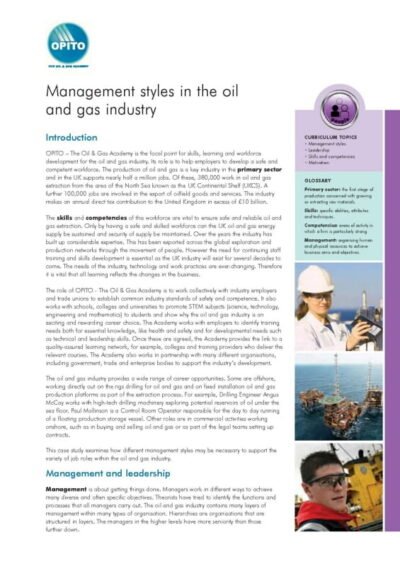 Management styles in the oil and gas industry (PDF)
Management styles in the oil and gas industry (PDF)  Vision, values and business strategies (MP3)
Vision, values and business strategies (MP3) 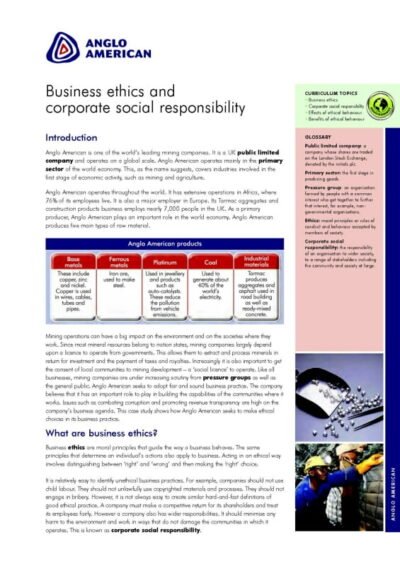 Business ethics and corporate social responsibility (PDF)
Business ethics and corporate social responsibility (PDF) 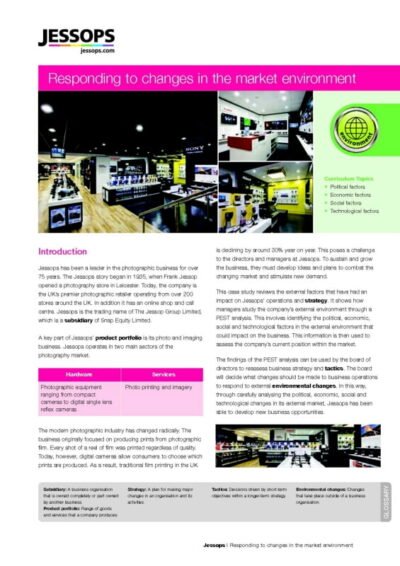 Responding to changes in the market environment (PDF)
Responding to changes in the market environment (PDF)  Developing the skills for managing change (PDF)
Developing the skills for managing change (PDF) 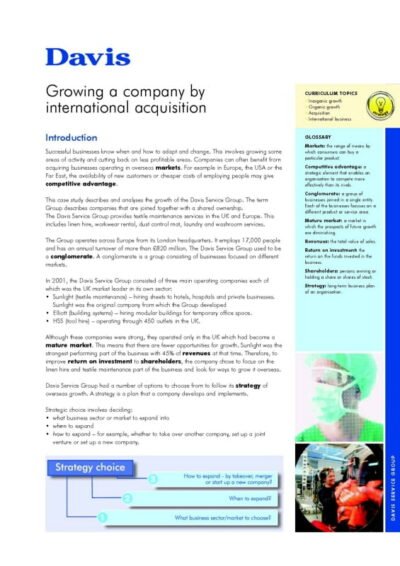 Growing a company by international aquisition (PDF)
Growing a company by international aquisition (PDF)  Vision, values and business strategies (PDF)
Vision, values and business strategies (PDF) 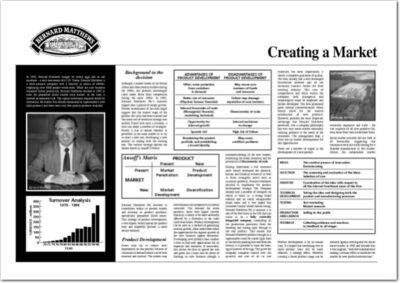 Creating a market (PDF)
Creating a market (PDF)  Developing a stronger customer focus (PDF)
Developing a stronger customer focus (PDF)  Growth through investment (PDF)
Growth through investment (PDF) 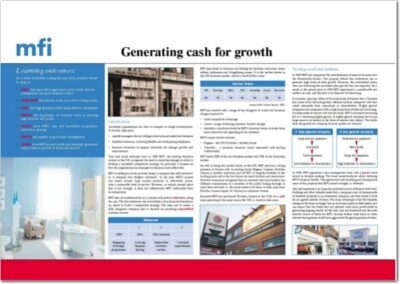 Generating cash for growth (PDF)
Generating cash for growth (PDF)  The role of PR in changing perceptions (PDF)
The role of PR in changing perceptions (PDF)  Decision making across the business cycle (PDF)
Decision making across the business cycle (PDF) 

